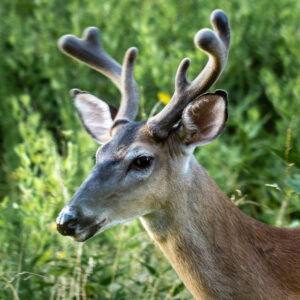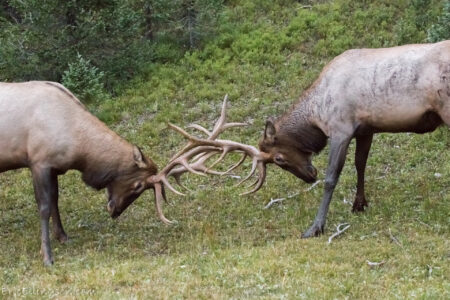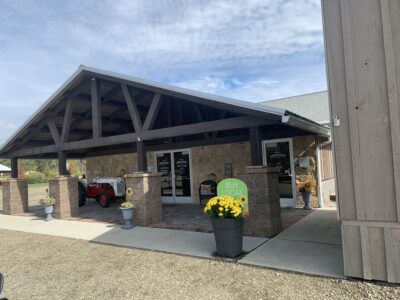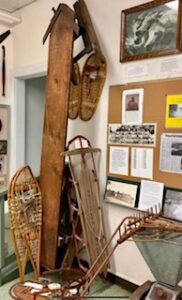Explaining the rut
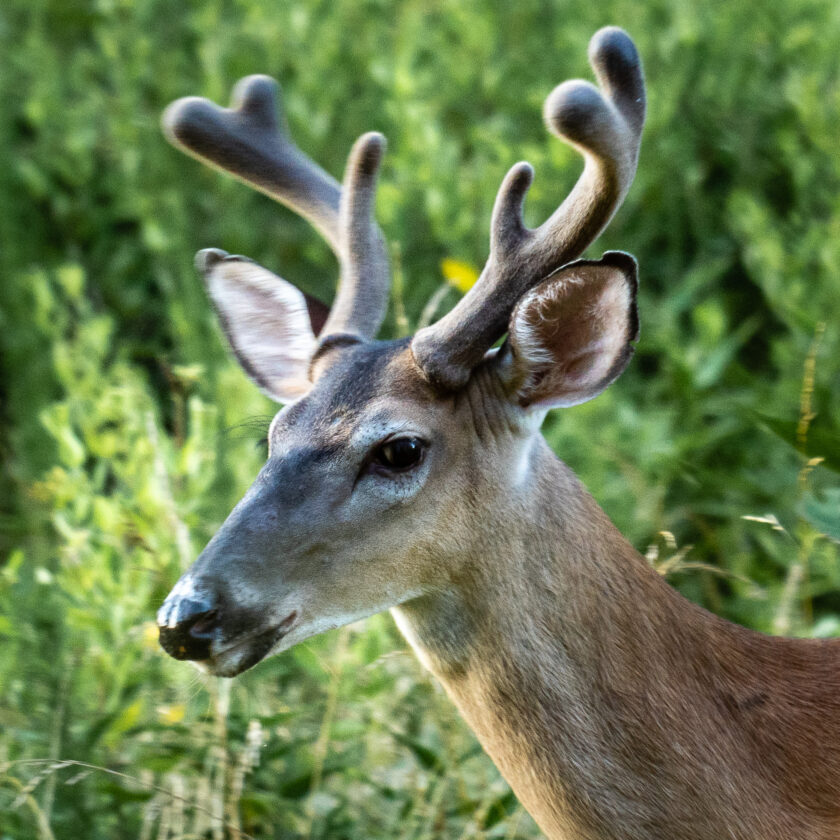
Photo by Larry Lamb A whitetail buck in velvet is pictured.
- Photo by Larry Lamb A whitetail buck in velvet is pictured.
- Photo by Eric Ellingson Elk fighting during the rut. Whitetail deer aren’t the only antlered animals who fight for their mate. Elk can be found within a 2-hour drive to Benezette, Pa., from Jamestown.
The rut happens throughout a span of weeks, peaking in late autumn, where male deer, called bucks, will spend their dusks and dawns looking for potential mates, called does. Bucks are known for their iconic antlers that grow on their heads between their ears. These antlers are not just to differentiate between male and female, but have many other functions in the natural world.
Early in the year, between January and April, bucks shed their antlers. I like to associate this with a child losing their tooth. Bucks will scrape their antlers on the ground, branches, or nearby tree bark to wiggle them loose. After some time, these antlers will fall off, making room for new ones to grow, just like when we lose a tooth. However, when a child grows a new tooth, it’s not covered in a velvet material like a buck’s growing antler is. This velvet helps protect the antler while it grows, providing blood and other nutrients to the developing bone underneath.
When the antlers are fully grown, this velvet will be scraped off as bucks grind them on various surfaces. During these months from early spring to late summer, bucks will continue to leave marks on trees with their antlers to assert dominance, creating what’s known to many as buck rubs. You can spot these buck rubs along the lower portion of many tree trunks, appearing as wood shavings exposed on the underside of a tree’s protective bark.
Antlers, most importantly, are used for protection against other bucks, especially when there is plenty of competition during the rut. To an outside observer, this looks like two bucks butting heads and striking their newly hardened antlers against the other’s. These bucks fight for one doe or sometimes a group of does, and the loser is cast out of the group to find another. On occasion, a pair of fighting bucks will get their antlers caught together, leaving the two competitors in an awkward position as they are intertwined with their enemy until they can untangle themselves.
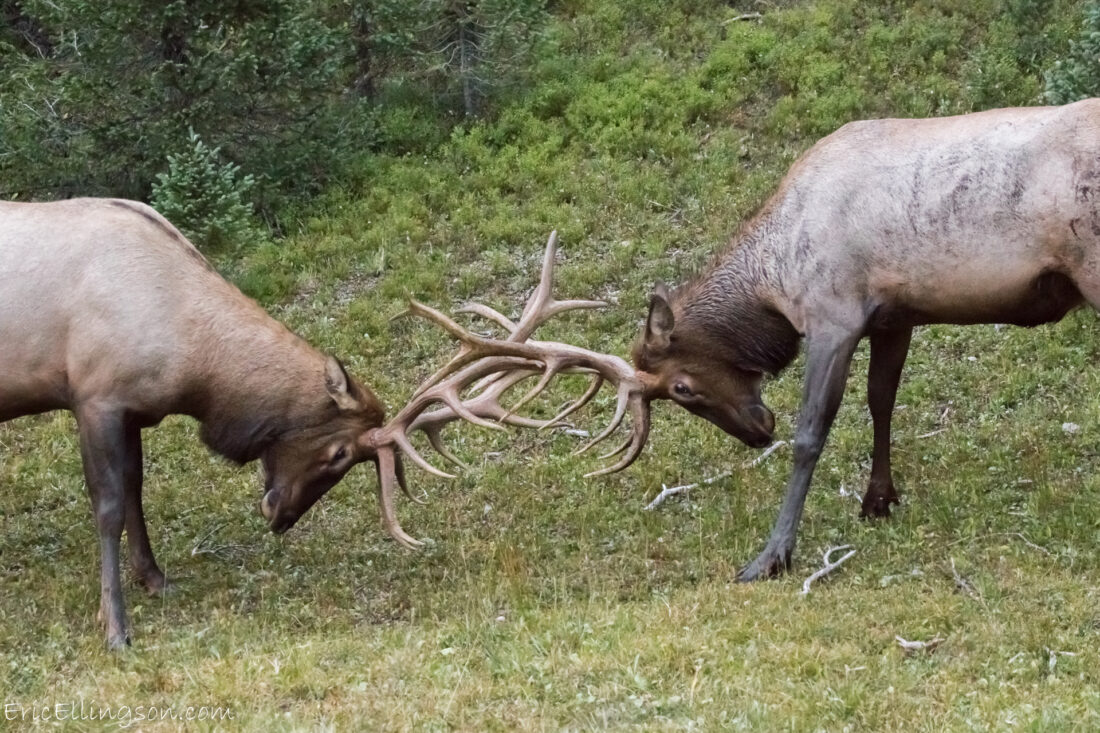
Photo by Eric Ellingson Elk fighting during the rut. Whitetail deer aren’t the only antlered animals who fight for their mate. Elk can be found within a 2-hour drive to Benezette, Pa., from Jamestown.
During these weeks, bucks are only concerned with one thing – finding a mate to breed. This makes them easy targets when New York’s licensed hunting season begins on October 1. Hunters during the rut take advantage of a buck’s distracted mindset. However, if you’re not a hunter, I would recommend keeping this distraction in mind as bucks are not as cautious when crossing busy roads in pursuit of a doe, or when a doe is running away from a dominant buck. This can result in fatal injuries to the animal and extensive damage to vehicles. Pay extra attention when driving at dawn and dusk to avoid clashing with a deer.
Hunters use a tool called a grunt tube that mimics the call a doe makes when she is in heat. Hunters may also spray artificial doe urine on their boots for a buck to follow its scent, or hunters will rattle two antlers together to echo the sound of two bucks fighting for breeding rights. This encourages the buck to come within close quarters of where the perceived action is taking place. By using the senses of sound, smell, and sight, a mindful and patient hunter may be successful in their efforts during the rut.
In comparison to other months throughout the year, the rut influences the build of a deer’s body to change. Bucks lose their summer fatty weight and build muscle since they are not concerned with food intake as they are with passing on their genes through breeding. Bucks spend a majority of their time chasing after does, crossing various landscapes – mountains, creeks, and fields alike. This ‘one-track mind’ can become detrimental to bucks during autumn. With winter approaching, many bucks who do not get enough nutrition after the rut can find themselves starving when all food sources are depleted. After this busy season, deer spend time regaining their fat to keep warm in the winter and replenishing their lost body weight from the physical intensity of the rut. This includes munching on acorns, fallen apples, and leftover corn that was forgotten by farmers.
The rut is an important event that continues the genetic lineage of whitetail deer in our area, which contributes to the balance of Western New York’s established ecosystem. Whether you’re a dedicated hunter or someone who enjoys watching a field with binoculars from a distance, the activity of the rut will peak your interest and curiosity towards these animals who live on the land we share.
Audubon Community Nature Center builds and nurtures connections between people and nature. ACNC is located just east of Route 62 between Warren and Jamestown. The trails are open from dawn to dusk and birds of prey can be viewed anytime the trails are open. The Nature Center is open from 10 a.m. until 4:30 p.m. daily except Sunday when it opens at 1 p.m. More information can be found online at auduboncnc.org or by calling (716) 569-2345.

